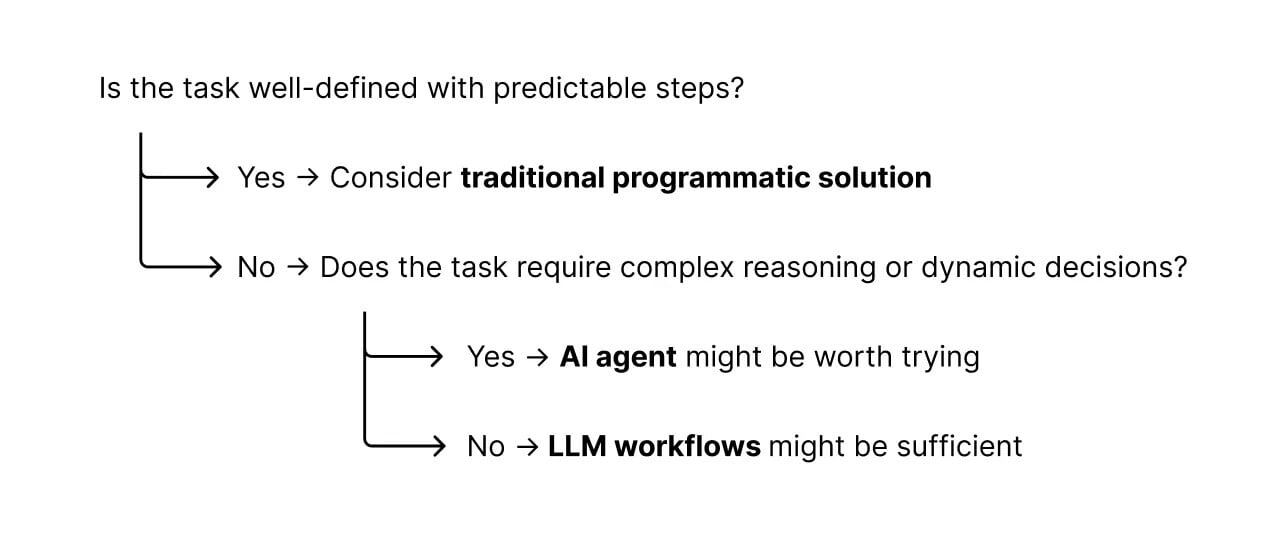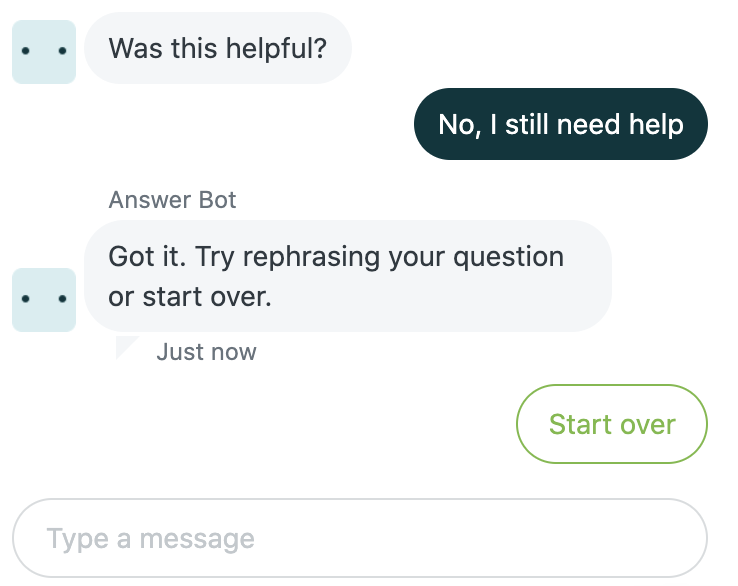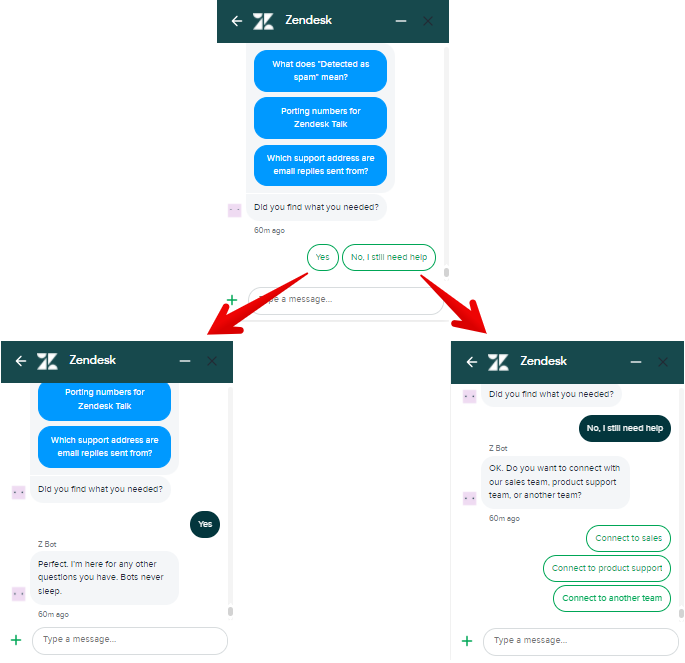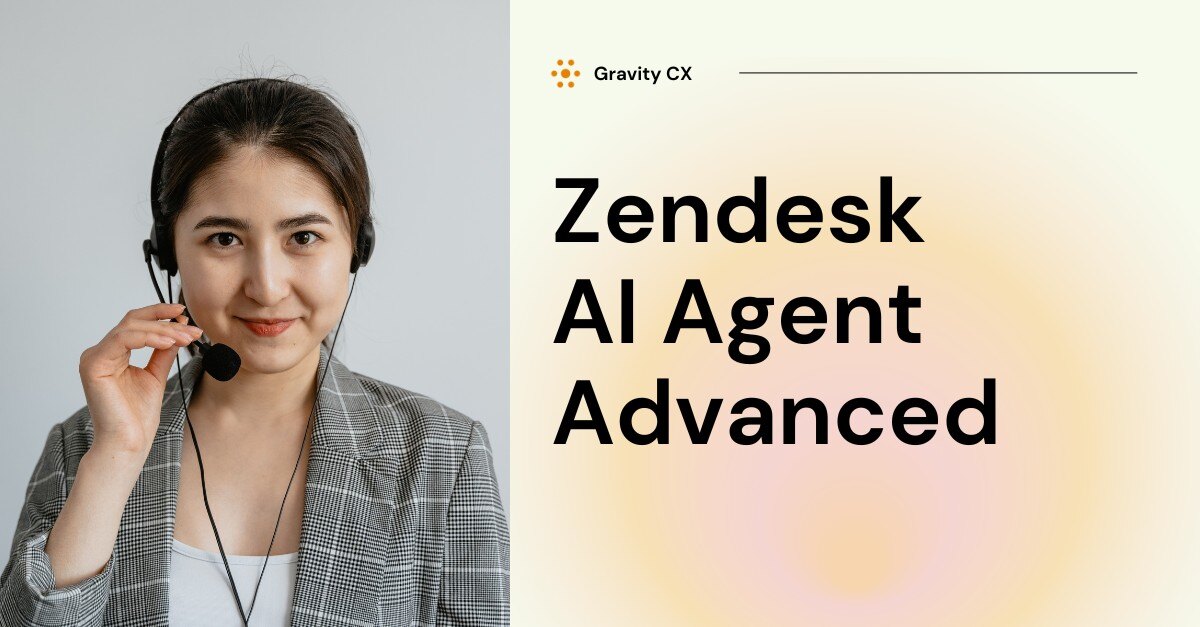Zendesk AI Agent Advanced Guide: CX Automation by Gravity CX
Introduction to Autonomous Agents
Autonomous agents represent a significant advancement in artificial intelligence, enabling systems to operate independently and perform complex tasks without the need for constant human oversight. These AI agents are designed to analyze structured data, make decisions, and execute actions across a variety of domains, from software engineering to business process automation. By leveraging advanced machine learning algorithms and large language models, autonomous agents can interact with other systems, tools, and even humans, enabling seamless data access, processing, and response generation.
For example, an autonomous agent might be tasked with analysing customer support tickets, identifying trends, and generating detailed reports for business leaders—all without human intervention. These agents can also integrate with other systems to perform tasks such as updating records, triggering workflows, or providing AI assistance in real time. The intelligence and adaptability of autonomous agents make them invaluable for companies looking to streamline operations, enhance decision-making, and unlock new levels of efficiency.
By enabling AI agents to perform complex tasks and interact with a wide range of data sources and tools, businesses can achieve greater scalability and responsiveness. As artificial intelligence continues to evolve, the role of autonomous agents in software engineering, data analysis, and customer experience will only become more prominent, driving innovation and delivering measurable value across industries.
AI Agent Design: A Comprehensive Guide
This guide provides an extensive overview of the design principles for building effective AI agent bots. It will explore different frameworks and design patterns for AI agent development. The guide aims to describe foundational ideas and motivations behind various agent architectures, emphasising user-centred design, practical applications, and platform-agnostic strategies suitable for chatbot builders. Understanding the idea behind hierarchical or team-based agent frameworks is also crucial for designing scalable and efficient multi-agent systems.
Table of ContentsExplore frameworks and structured approaches in:
I. Core Conversation Design Principles
Effective AI agent design starts with understanding and implementing core conversation design principles. These principles ensure that the bot interactions are natural, trustworthy, and inclusive. When applying these principles, we assume that users expect clear, efficient, and helpful communication from AI agents.
-
Natural and Human-Like Conversations: Design interactions that mimic human conversation. While aiming for a natural feel, ensure users know they are interacting with a bot. Providing clear instructions to the bot is essential for guiding its responses and ensuring consistent, contextually appropriate interactions.
-
Building User Trust: Establish trust through user-centred design. Transparency and reliability are key to making users comfortable interacting with the bot.
-
Inclusive Experiences: Create experiences where all users feel heard and understood. Consider diverse communication styles and needs to ensure inclusivity.
Here is a simple flow chart to help you determine if you really need to implement AI agents in your product or operations:


Author: Guodong (Troy) Zhao
II. Key Elements of a Bot Conversation
Understanding the key elements of a bot conversation is crucial for designing effective interactions. Each element plays a specific role in guiding the user and achieving their goals.
-
Welcome: The initial interaction sets the tone. Provide a warm welcome that clearly defines the bot’s purpose.
-
Example: “Hi, I’m the [bot name] automated assistant, ready to help you today”.
-
User Utterance: This refers to anything the user types or says. The bot should be equipped to understand and respond appropriately.
-
Bot Response: This is what the bot says in response to user input. Responses should be contextually relevant and helpful. The output generated by the bot should be delivered in a format that ensures clarity and usefulness for the user, such as plain text, HTML, or other structured formats depending on the workflow.
Menu: Use vertical lists of options to guide users through a dialogue. Horizontal lists (buttons) can be used for quick actions.
Author: Rachael Mullins
-
Intent: Understand the customer’s reasons for interacting with the bot. Accurate intent recognition is vital for providing relevant assistance.
-
Entity: Collect necessary data from the customer. This could include names, order numbers, or other relevant information.
-
Conversation Loopback: Before ending the conversation, confirm that the user’s needs have been met.
Example: “Can I help you with anything else?”.

-
Closing: End the conversation gracefully with a call to action, such as leaving a review or completing a survey.
-
Example: “Thanks for chatting, goodbye”.
-
Error Handling: Plan for system errors and misunderstandings. Provide helpful language to guide the customer to the next step, such as transferring to an agent.
-
Example: “Unfortunately, no agents are available now. Would you like to create a ticket?”.

-
Confused/Conversation Repair: Assist users when the bot doesn’t understand their input.
-
Example: “I didn’t quite understand, could you please enter that again?”.
-
Bot Response Delay: Incorporate a delay in the bot’s response to avoid sounding robotic. This creates a more natural conversational flow.
III. Best Practices for AI Agent Design
Implementing best practices ensures that your AI agent is effective, efficient, and user-friendly. AI agents are transforming services by redefining how they are delivered, coordinated, and experienced for both users and internal stakeholders.
-
Define Clear Goals: Identify customer problems that can be easily solved without human intervention. Use AI-powered insights to understand top customer intents—these practices help solve common issues in AI agent design.
-
Connect to a Knowledge Base: Link your AI agent to a reliable knowledge base for providing instant responses. This enables the bot to answer questions accurately and efficiently.
-
Implement Governance: Control which topics are off-limits to ensure the AI agent operates within secure boundaries. This is crucial for maintaining data privacy and compliance.
-
Customise Personalities: Tailor the AI agent’s persona to match your brand guidelines. A consistent service experience across all channels helps reinforce brand identity.
-
Balance Automation and Personalisation: Combine generative AI with controlled conversation flows for a balanced approach. This ensures both efficiency and a personal touch. Achieving the right balance presents a challenge, requiring careful planning to optimize both automation and personalization.
IV. Common Use Cases
AI agents can be applied to various use cases to improve customer service and streamline operations. In each use case, a task refers to the specific objective the AI agent is designed to accomplish, such as answering customer queries or processing requests.
-
“Where Is My Order?”: Integrate the AI agent with the order management system to provide real-time updates, and deploy the agent on a specific site to deliver order status information directly to users.
-
Agent Transfer: Facilitate seamless hand-offs to human agents when necessary, providing them with full context. Document the transfer process on a help page so users can reference how agent transfers work.
-
Example: “Would you like me to connect you to an agent who can assist further?”.
V. Designing for AI: Generative AI and Data Integration
-
Generative AI: Utilise generative AI, powered by a large language model, to provide conversational responses in multiple languages, available 24/7.
-
Data Integration: Integrate data from various sources and the agent's environment to handle sophisticated requests. This allows the AI agent to perform tasks like processing returns, exchanges, and cancellations without human intervention. The execution of these tasks is managed efficiently when integrating generative AI, ensuring seamless workflow automation.
VI. Development and Deployment Best Practices
Developing and deploying AI agents requires a thoughtful approach to ensure they deliver value while minimizing risks. Start by crafting a clear system prompt that defines the agent’s role, capabilities, and boundaries. This foundational step helps guide the agent’s behavior and ensures consistent interactions with users.
A user-friendly interface is essential for encouraging adoption and making it easy for users to interact with the agent. Throughout the development process, rigorous testing is crucial to identify and resolve issues before deployment. Developers should also weigh the costs associated with building and maintaining autonomous agents, including infrastructure, integration, and ongoing support.
Security and data privacy must be prioritized, especially when integrating AI agents with other systems or handling sensitive information. Evaluate the agent’s performance regularly, using analytics to track key metrics and gather user feedback. This feedback loop allows companies to respond quickly to issues, refine the agent’s functionality, and ensure continuous improvement.
By following these best practices, companies can create robust AI agents that provide meaningful assistance, streamline processes, and deliver a positive user experience. A well-planned development and deployment strategy not only reduces risks and costs but also maximizes the long-term value of AI-driven solutions.
VII. Testing and Quality Assurance
Thorough testing and quality assurance are essential for building reliable and effective AI agents. Developers should simulate a wide range of scenarios, using different types of data, tasks, and user inputs to ensure the agent can handle real-world complexity. This includes testing the agent’s ability to interact with other systems, tools, and humans, as well as its capacity to generate accurate and contextually appropriate responses in various formats.
Quality assurance goes beyond initial testing—it involves ongoing evaluation of the agent’s performance, identifying areas for improvement, and making necessary adjustments to maintain high standards. Developers should use both automated and manual testing methods to assess how the agent responds to unexpected inputs, edge cases, and evolving user needs.
By investing in comprehensive testing and quality assurance, developers can create AI agents that consistently deliver high-quality assistance, adapt to new challenges, and integrate smoothly with existing systems. This commitment to quality ensures that users receive reliable, helpful, and efficient support, enhancing trust and satisfaction with the AI solution.
VIII. Improving and Maintaining Performance
Continuous improvement is key to maintaining the effectiveness of AI agents over time. Developers should regularly monitor the agent’s performance using analytics and user feedback to evaluate how well it meets user needs and business objectives. This process involves analyzing data to identify trends, pinpointing areas where the agent may struggle, and updating algorithms or models to enhance functionality.
Staying current with advancements in artificial intelligence and machine learning enables developers to incorporate new techniques and best practices, ensuring their agents remain competitive and capable. Regular testing and quality assurance checks help catch potential issues early, allowing for timely updates and refinements.
By fostering a culture of ongoing evaluation and improvement, developers can create AI agents that adapt to changing environments, user behaviors, and system requirements. This proactive approach ensures that the agent continues to perform at a high level, providing valuable insights and assistance to users while maintaining the quality and reliability expected in enterprise environments.
IX. Integrating Generative AI Effectively
Integrating generative AI into AI agents opens up new possibilities for creativity and personalization. With generative AI, agents can create original content—such as background music, images, or text—tailored to specific tasks and user needs. For example, an AI agent might generate background music for a marketing video or produce custom images for a presentation, enhancing the user experience and adding value to business processes.
To ensure successful integration, developers should clearly define the specific tasks and goals the generative AI will support. It’s important to consider potential challenges, such as ensuring data quality, managing copyright concerns, and maintaining the reliability of generated outputs. By carefully evaluating these factors and designing the agent to address them, developers can create tools that are both innovative and dependable.
Generative AI can transform AI agents into powerful assistants for creative and business tasks, enabling users to generate high-quality content quickly and efficiently. By leveraging the strengths of generative AI while maintaining a focus on usability and quality, developers can deliver AI agents that not only meet but exceed user expectations.
VI. Improving and Maintaining Performance
-
Analytics: Use reporting and analytics to monitor the AI agent’s performance. Track metrics such as resolution time, engagement rate, and customer satisfaction. Review the history of agent interactions to identify trends and patterns over time.
-
Insights: Leverage insights to identify areas for improvement. Analyse customer drop-off points and unnecessary agent handovers, and expand the analysis to include additional performance metrics for a more comprehensive understanding.
VII. Integrating Generative AI Effectively
Imagine a future where generative AI enables AI assistants to seamlessly handle complex tasks, such as scheduling medical appointments or managing financial planning, by acting on your behalf and providing personalized support.
Generative AI, powered by Large Language Models (LLMs), offers exciting possibilities for enhancing AI agents. However, it’s essential to integrate it thoughtfully.
-
Retrieval-Augmented Generation (RAG): Combine LLMs with vector databases to generate grounded and truthful responses. RAG ensures that the AI agent has access to the latest information by using search methods to retrieve relevant data.
-
Divergent and Convergent Thinking: Design conversations that are divergent in exploring options but convergent in solving problems. Choosing the right method for guiding the agent's reasoning can significantly improve its effectiveness.
-
The 80/20 Rule: Focus on designing the key use cases that cover 80% of user paths. Use LLMs to handle edge cases and common detours.
-
Generative Fallback: Use fallback feature to provide responses when user input doesn’t match an intent. This ensures that the AI agent provides helpful and specific responses, avoiding generic prompts.
VIII. Mitigating Potential Pitfalls
While generative AI offers many benefits, it also presents potential pitfalls that need to be addressed. Thorough documentation of agent behavior and design decisions is essential to support troubleshooting and ensure compliance with best practices.
-
Bias: Be mindful that LLMs can learn and amplify harmful social biases. Ensure that the AI agent is fair and unbiased in its responses.
-
Data Privacy and Security: Protect sensitive user inputs from prompt injection and other security threats. Adhere to data privacy regulations, especially in regulated industries like finance and healthcare.
-
Testing: Use appropriate testing strategies for non-deterministic responses. Traditional testing methods may not be sufficient for evaluating generative AI outputs.
IX. The Human Element
Injecting generative content into chat and voice bots can help build user trust and make experiences more human.
-
System Persona: Define a clear system persona to ensure a consistent user experience. Model the persona after a helpful and empathetic assistant.
-
Trust and Transparency: Be transparent about the AI agent’s capabilities and limitations. This helps manage user expectations and build trust. We encourage you to share your ideas, questions, and suggestions for advancing AI agent design and fostering a collaborative community.
By following these guidelines, you can create AI agents that provide efficient, personalised, and trustworthy customer service. The integration of generative AI, when done thoughtfully, can enhance the user experience and improve overall performance. Looking to the future, AI agents are expected to evolve into fully autonomous systems, capable of independently handling complex tasks and transforming how users interact with technology.


